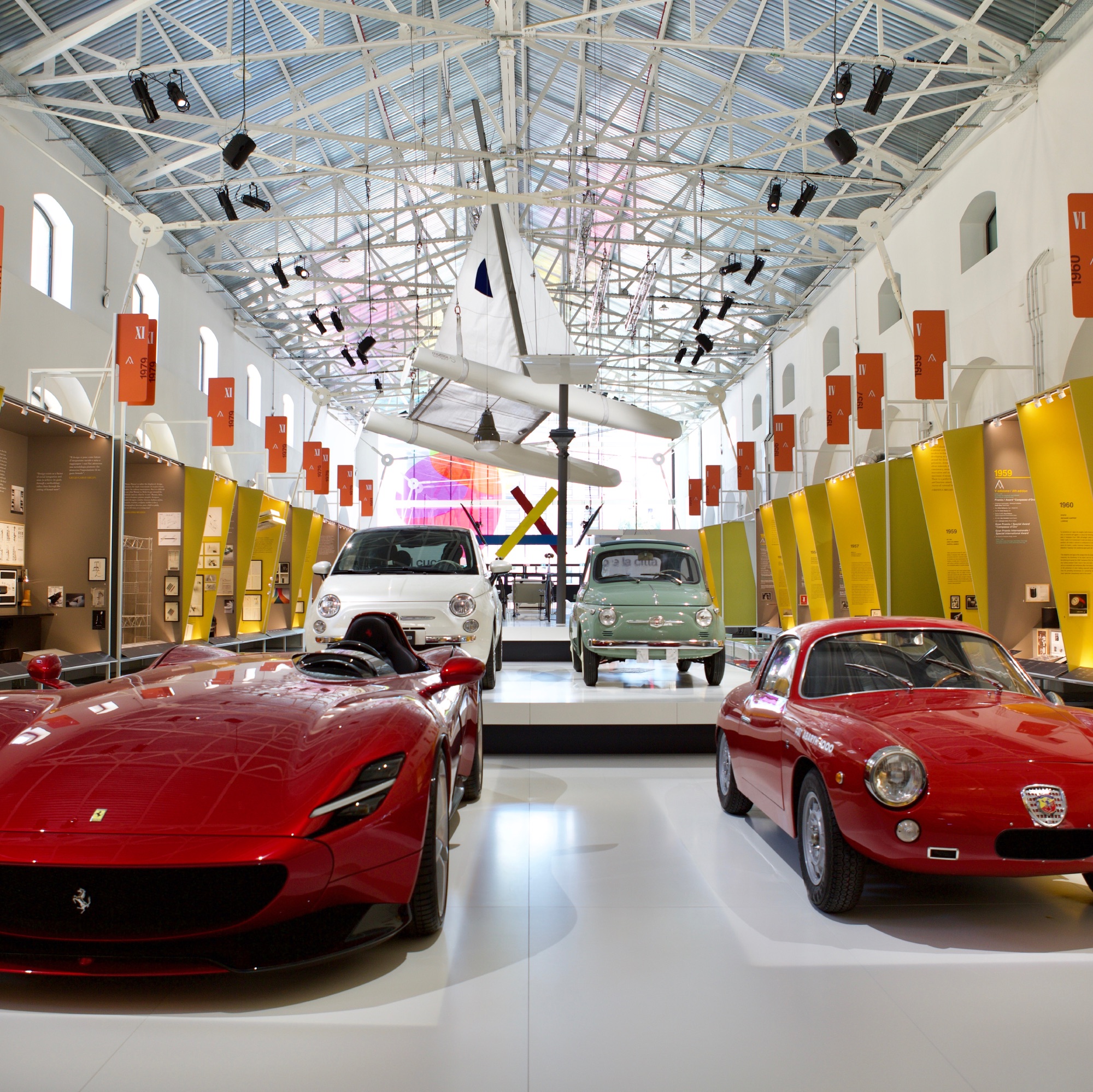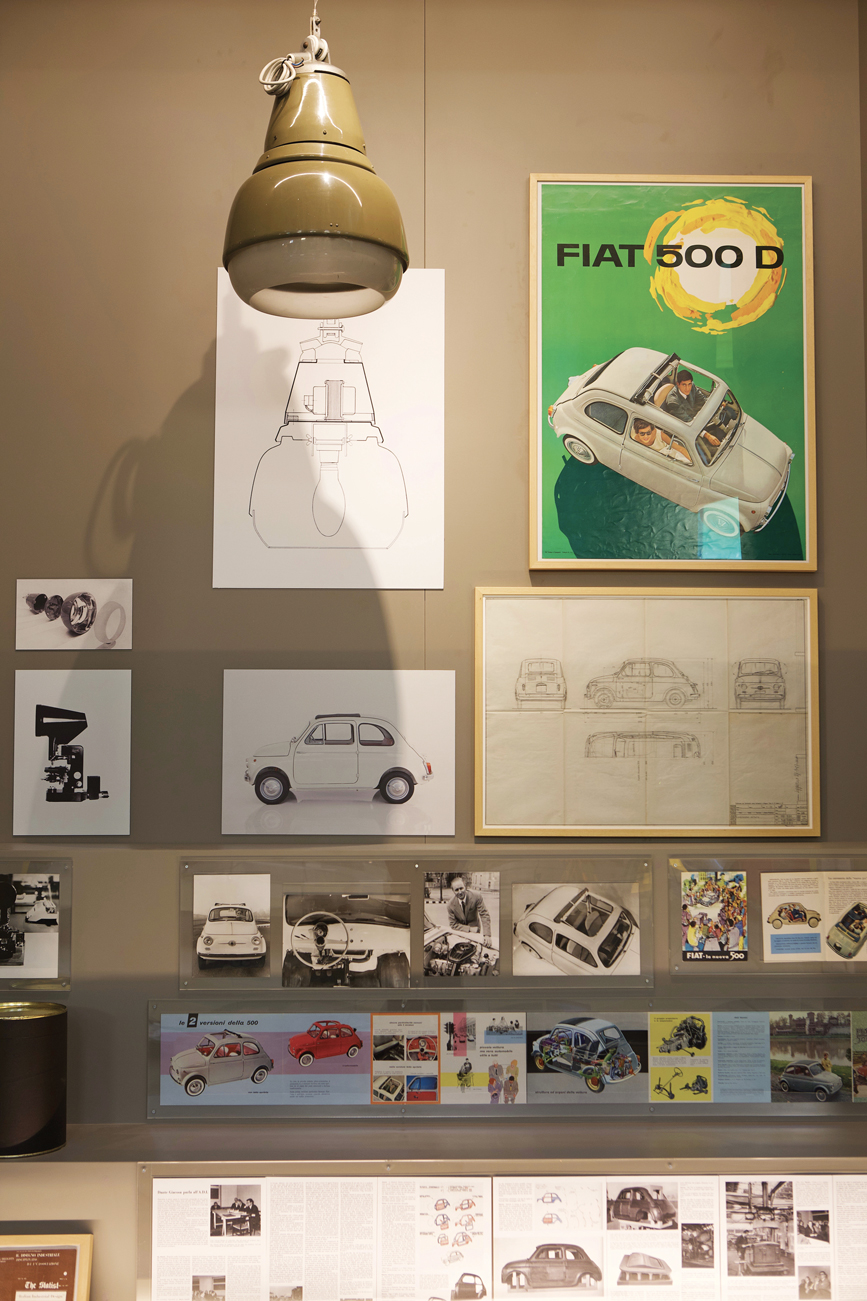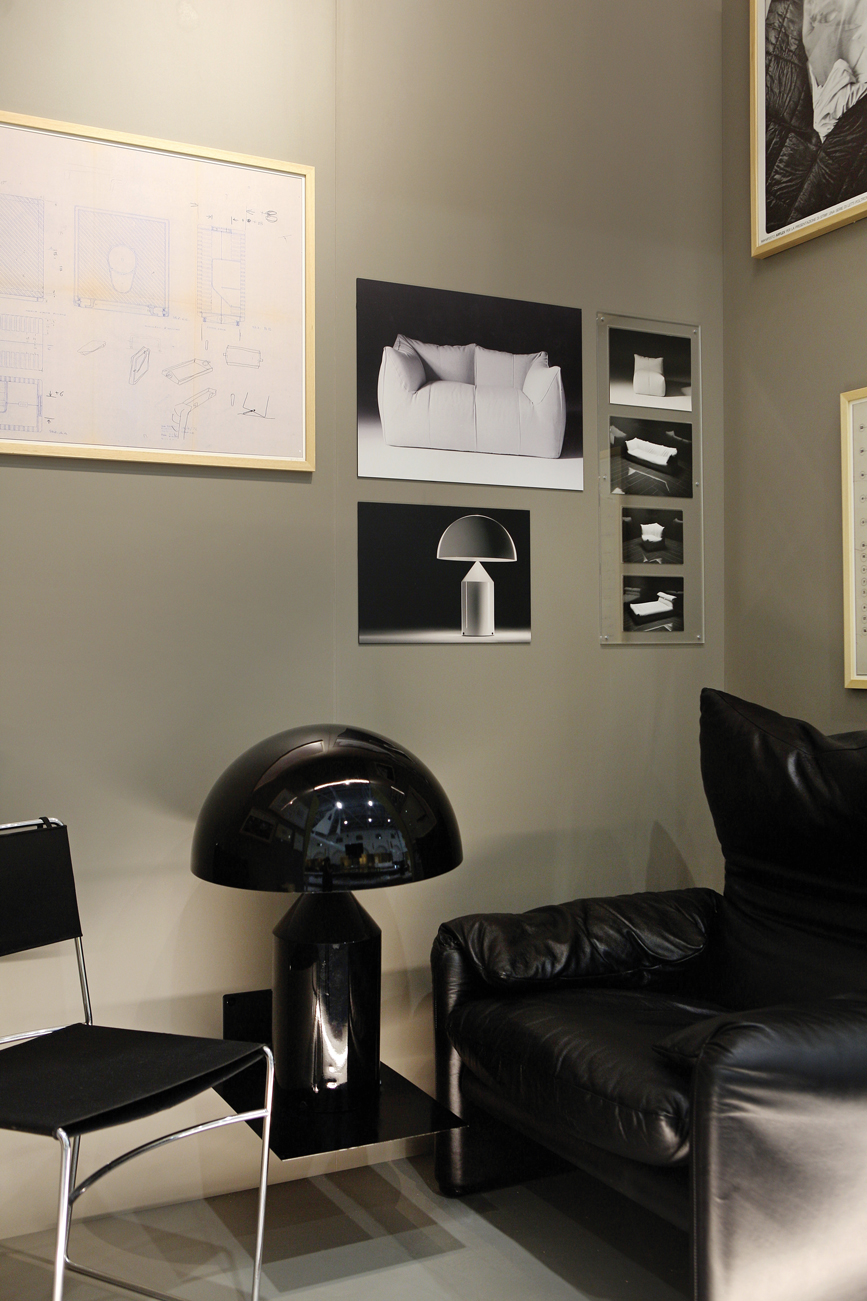ADI DESIGN MUSEUM/Giuseppe Finessi*
Design is an icon of Made in Italy around the world, along with fashion, food culture, lifestyle, and of course art. What stories does ADI Design Museum Compasso d’Oro tell?
We conceived and designed this museum to tell the story of the objects in a more comprehensive way, which is not just the story of the designer and the entrepreneur – as some say, of the object’s father and mother – but of various other professionals who, together with the designer and the company, contribute to its birth and fortune. Let’s think, for example, of Giovanni Sacchi, a great cabinetmaker who sublimely built design models out of wood, when 3D printers were still a long way off. Therefore, we wanted this museum to be not just a well-lit space to display objects, but a space where, through documents, materials, and other wonders of Italian design, as we like to call them, – which are advertising campaigns, period photographs, sketches, working drawings, and much more – we can contextualise and define the history of the object. There are technical offices, research and project development centres that are not simply places where thoughts are transformed into executive drawings, but are places of great professionalism. For us, this study has meant months and months of programmed archive research. Italian magazines, at least fifteen of which are very important – think of Domus and Casabella, magazines that are now almost a hundred years old – have contributed to making Italian design known to the world. There are also great photographers, such as Aldo Ballo and Luigi Ghirri, and art historians, such as Giulio Carlo Argan and Leonardo Sinisgalli. So, the formula we have chosen is to tell the story of Italian design from another point of view, which is not that of the simple object, but above all of the historical and cultural context that made it possible.
What are the most significant features of the Museum?
When we started thinking about this museum more than two years ago, we realised that it might be time to conceive of an exhibition space that was not divided into separate rooms or environments, but rather was fluid and permeable, where the permanent collection, which we imagined would always be in transformation, could be followed by temporary exhibitions and vice versa. Through the historical collection which we called “Il Cucchiaio e la Città” – The Spoon and the City – citing historical and sedimented titles that in some way could be the object of a re-actualisation, we tried to imagine a project of arrangement, which then became an exhibition project. We tried to imagine an arrangement project, which then became an exhibition project, built around the idea that there was a permanent historical collection that could change over the course of the months, through rotation, implementation and variation of materials. Within this chronological framework, we could devote moments of in-depth study to a particular project, each time new, with a rich archive collection. Therefore, a constantly evolving exhibition programme that allows us to carry out research – because by doing research we do exhibition and dissemination work – we regain possession of history, of the fundamentals that identify us, while sharing a rich archive with our public and scholars.
What value do research and dissemination have in the Museum?
The museum is not only a place that preserves works and valuable objects, but also a key player in doing research, and the result of this can only be that of sharing, and therefore, of dissemination. We have built a project aware of the international primacy of Italian design, and in particular of the historic Compasso d’Oro collection, recognised by the Superintendency as being of national interest. However, even though the collection has been historicized, it still needs to be supported through the search for new archive material, because companies and designers themselves do not always have the energy, resources and time to preserve and order their projects. All this in order not to lose the memory, the history of an object, which tells about us, how we were and how we are. Ours is an almost archaeological work, searching in disparate places for a document, something that can lead us to new discoveries or enrich the material we already have. The Museum contains 2,500 pieces including documents, finished objects, manuscripts, photographs, publications, sketches and executive models. This is the reason why we thought of the formula of in-depth studies, accompanying the object on display with different materials that help its reading. So, for someone in my profession, discoveries are never enough, but they are certainly enough to be able to tell the many components, the many qualities, the many truths of an object.
The Compasso d’Oro award, born from an idea of Gio Ponti in 1954, marks the culmination of the research path of every designer, who confronts creative excellence at the service of the industrial product. How has Italian and international design changed over this long period of time?
As in all disciplines, design has evolved a great deal. It has been perfected, it has had moments of great acceleration, great goals, in some historical passage, as in all fields, it has not always aimed at pursuing a work of excellence. The trend, however, is that of the primacy of Italian design, which continues to record and interpret the characteristics and needs of its time in the best possible way. In this respect, Compasso d’Oro compared to other awards is a credible mirror with a wide-ranging look at all needs and our lives. This is to emphasise that the world of design is not just a domestic one. Compasso d’Oro, despite being born within a community to which it belongs, namely that of architecture – it was Gio Ponti who, in 1954, conceived this important award, initially supported by “La Rinascente”, the department store dedicated to the household – despite this soul and this starting point, the award was immediately able, and still is today, to look at the entire world of production, with the aim of supporting, promoting and recognising a widespread industrial aesthetic. If we look at the awards since its first edition to date, including honourable mentions, lifetime achievement awards and international prizes, we find the most diverse objects: from Bruno Munari’s Zizì toy in ‘54, Dante Giacosa’s 500 in ‘59, Luigi Caccia Dominioni and Achille and Piergiacomo Castiglioni’s T12 school chair in ‘60, to Gino Valle’s alphanumeric tele-indicators for stations and airports in ‘62, the Milan underground by Franco Albini, Franca Helg and Bob Noorda in 1964, the Eclisse lamp by Vico Magistretti in 1967, the Sorana armchair by Afra and Tobia Scarpa for Cassina in 1970, and the Modo magazine by Alessandro Mendini in 1979, Carla Venosta’s Tecniko false ceilings in 1981, Richard Meier’s tea service for Alessi in 1984, Enzo Mari’s Tonietta chair for Zanotta in 1987, Luigi Baroli’s Cartoons partition wall for Baleri Italia in 1994, Thomas Heatherwick’s kinetic Spun seat in 2014, OMA’s architectural project for the Prada Foundation in 2018, Flavio Manzoni’s Ferrari Monza FP1 in 2020, and Ddpstudio’s Hannes prosthetic hand, the latest award-winner. In short, the world of design recounted by Compasso d’Oro is a very wide world, a narrative, from this point of view, that manages to record and recount the evolution of taste in our country.
* Curator of the permanent exhibition of the Compasso d’Oro Historical Collection





